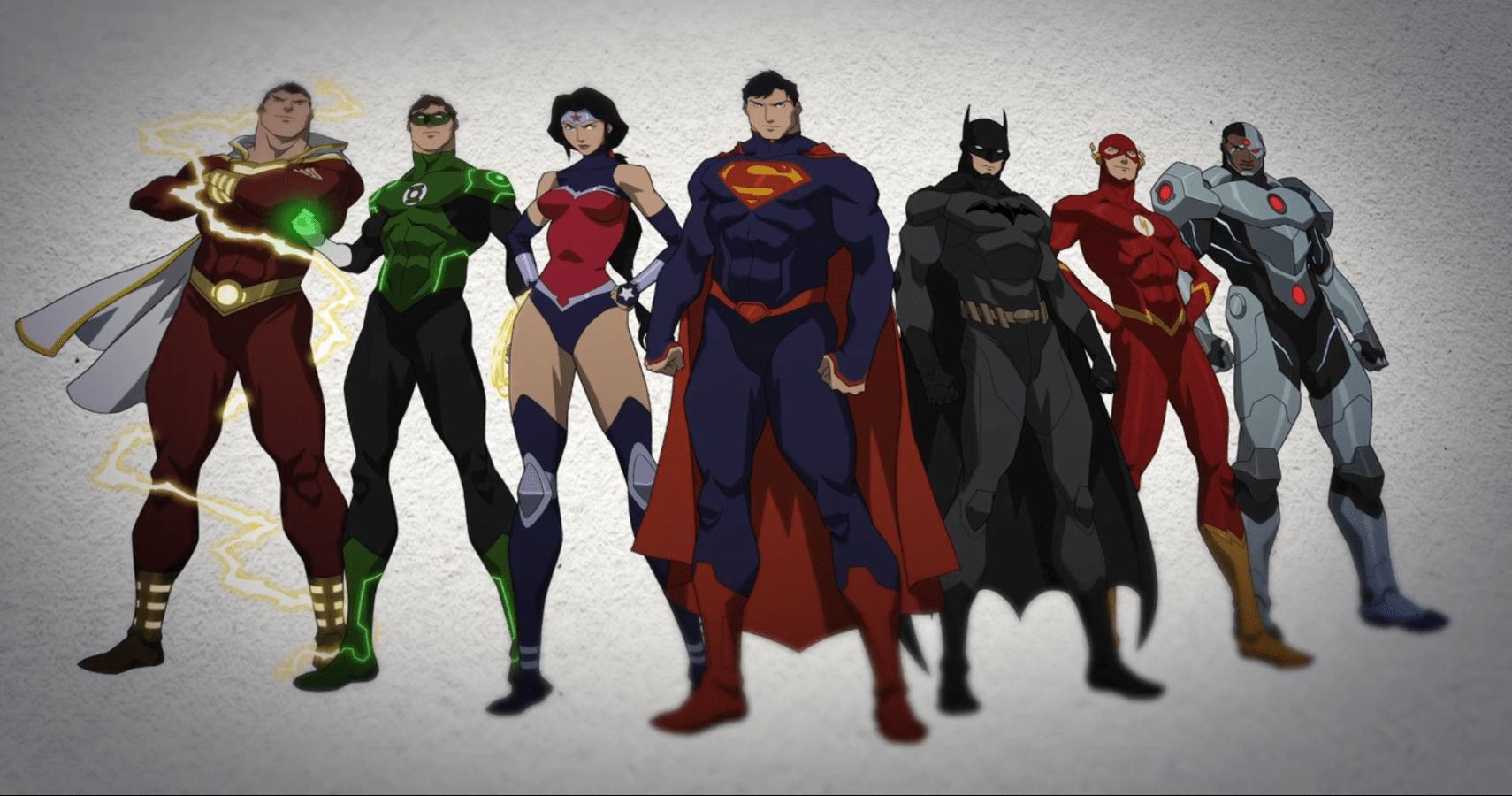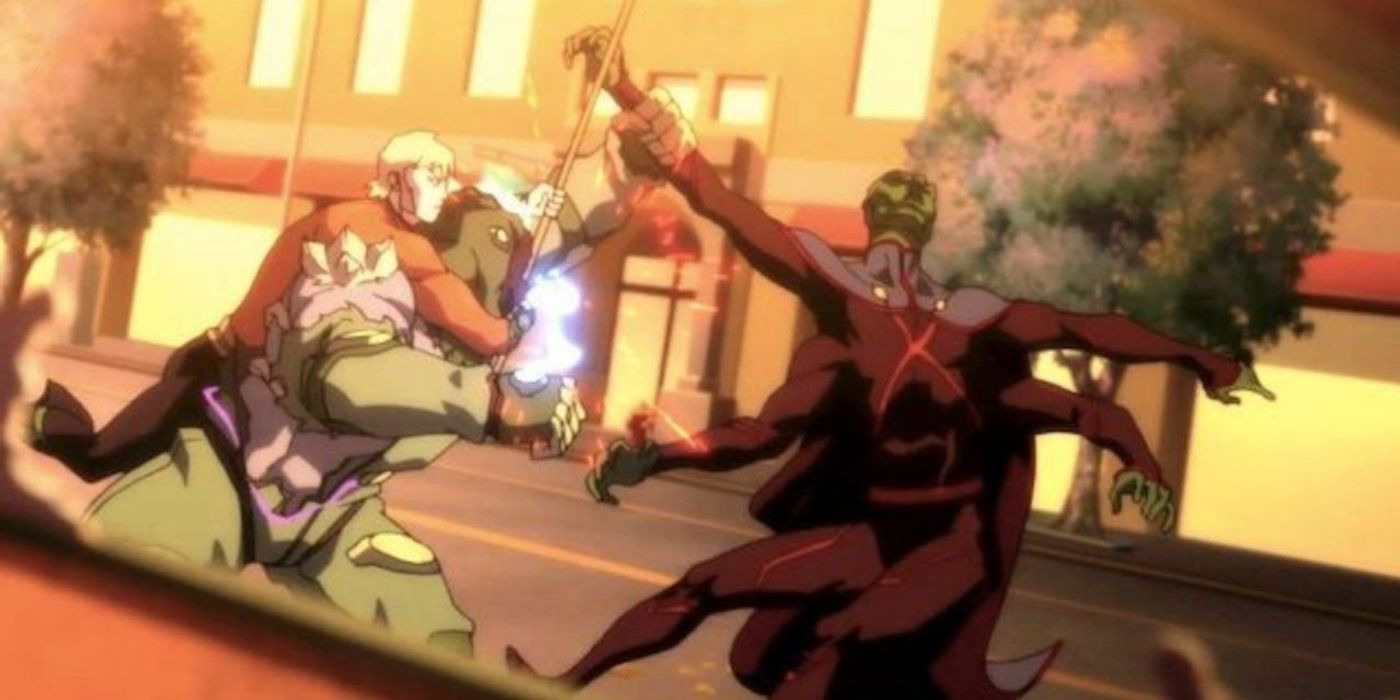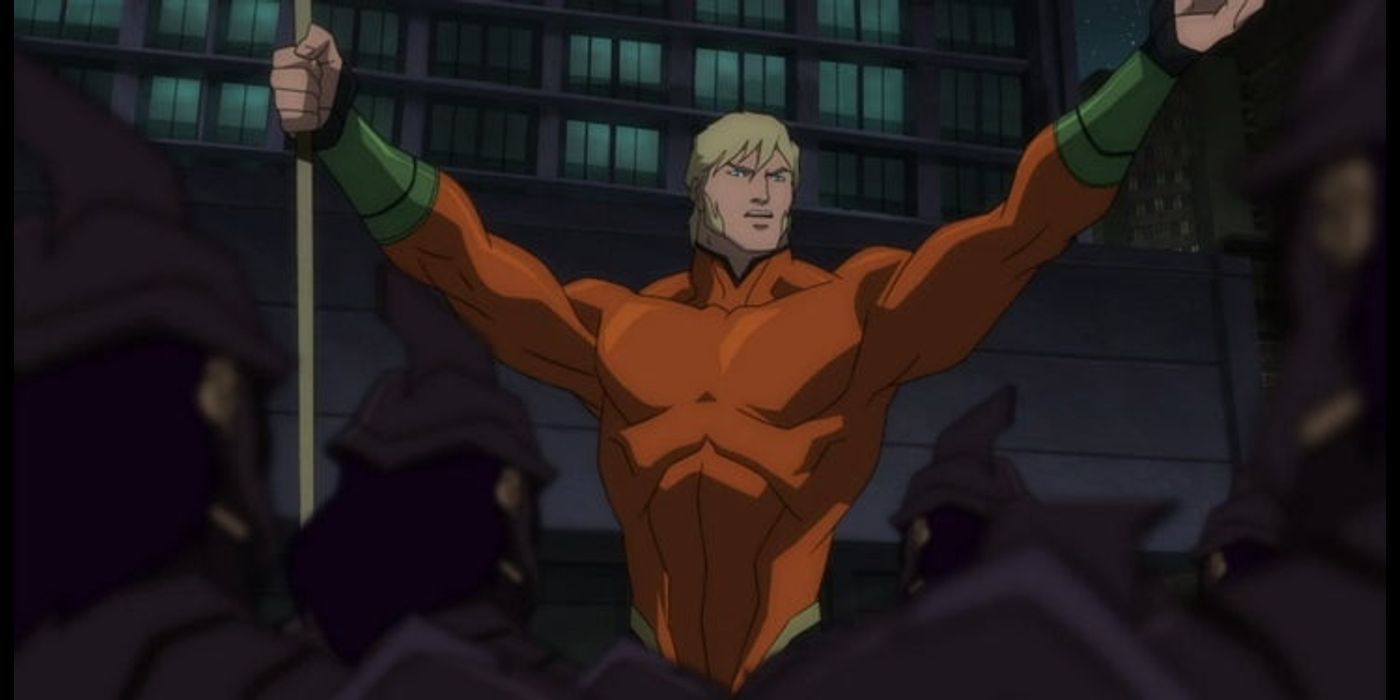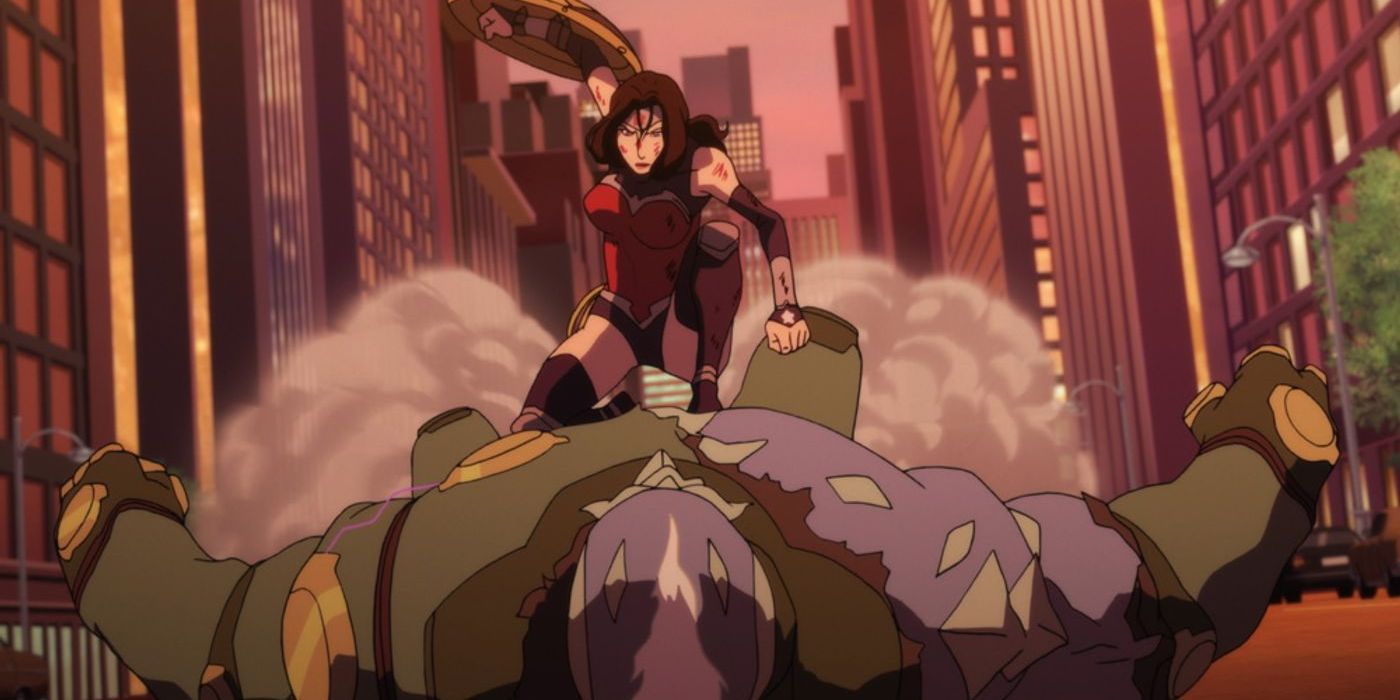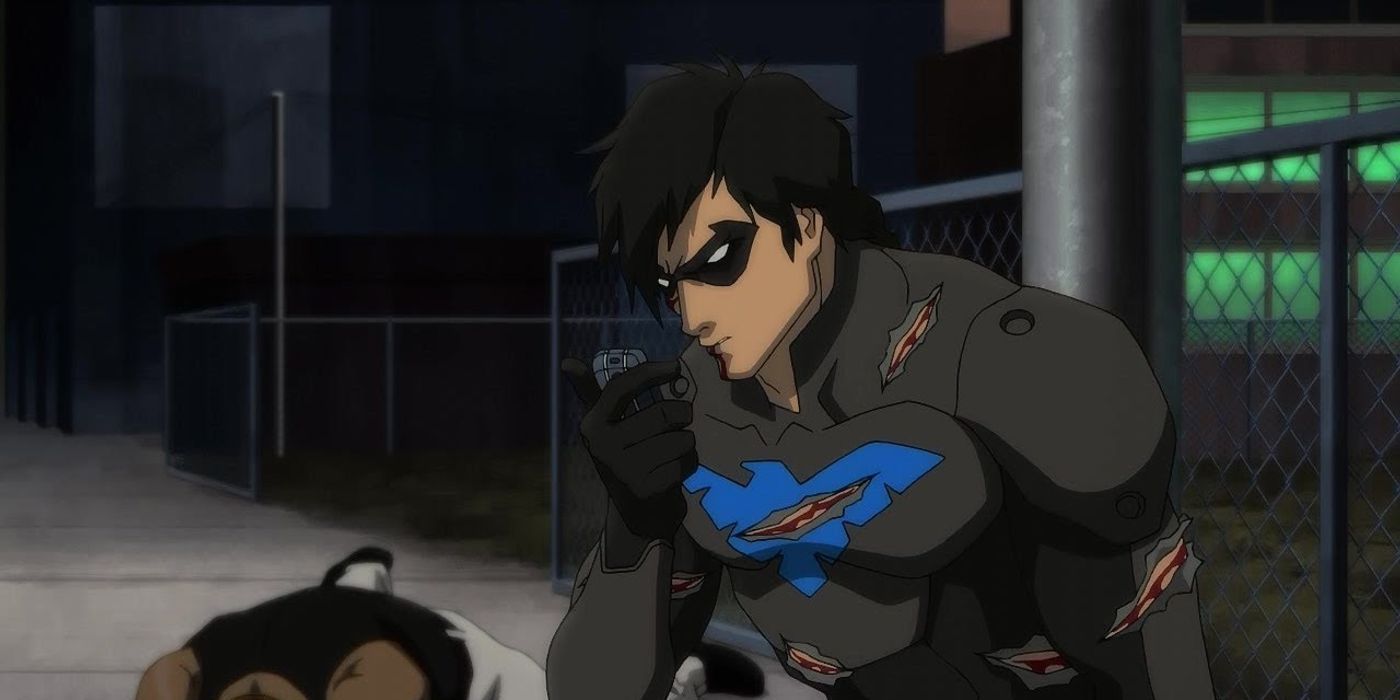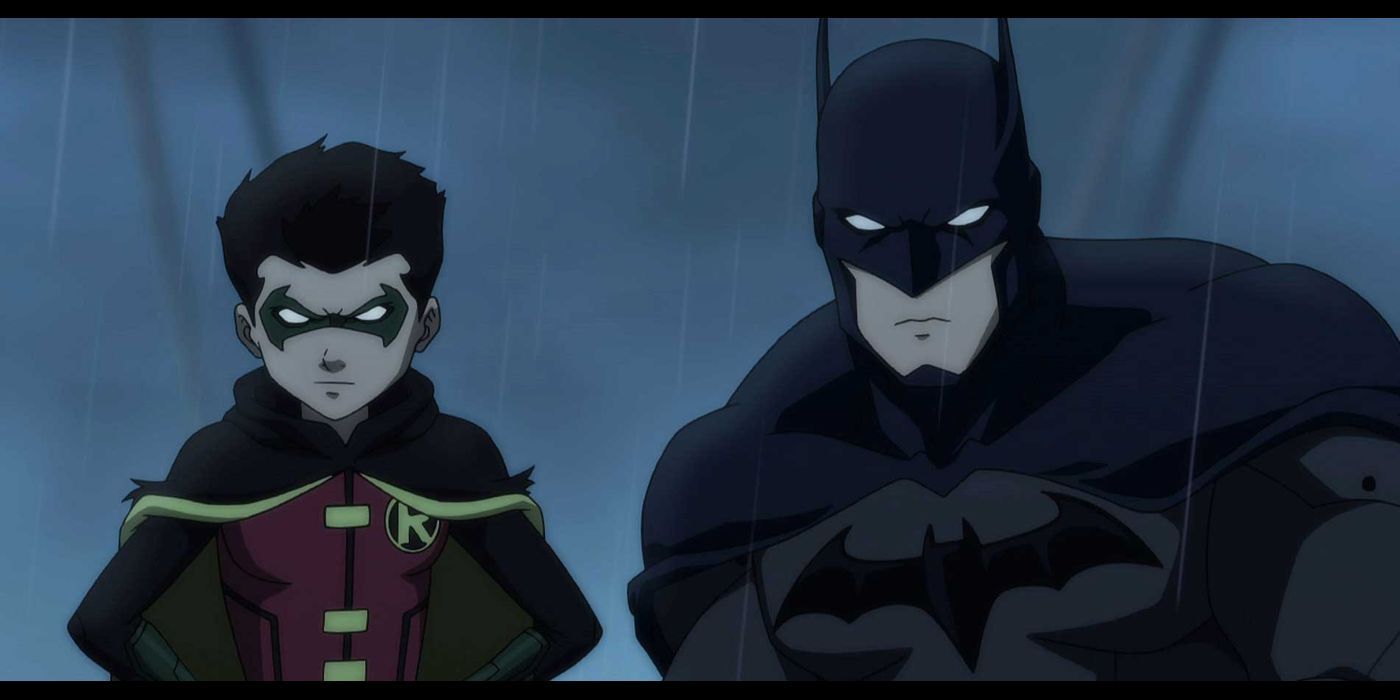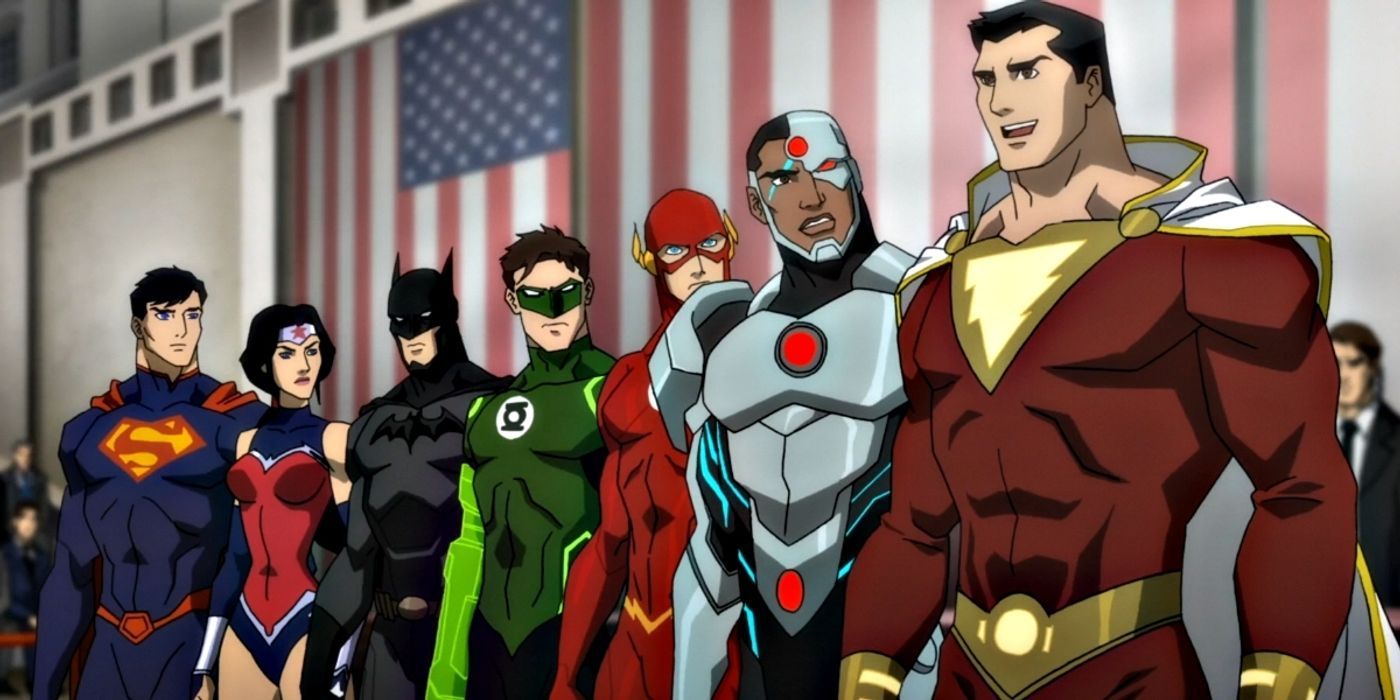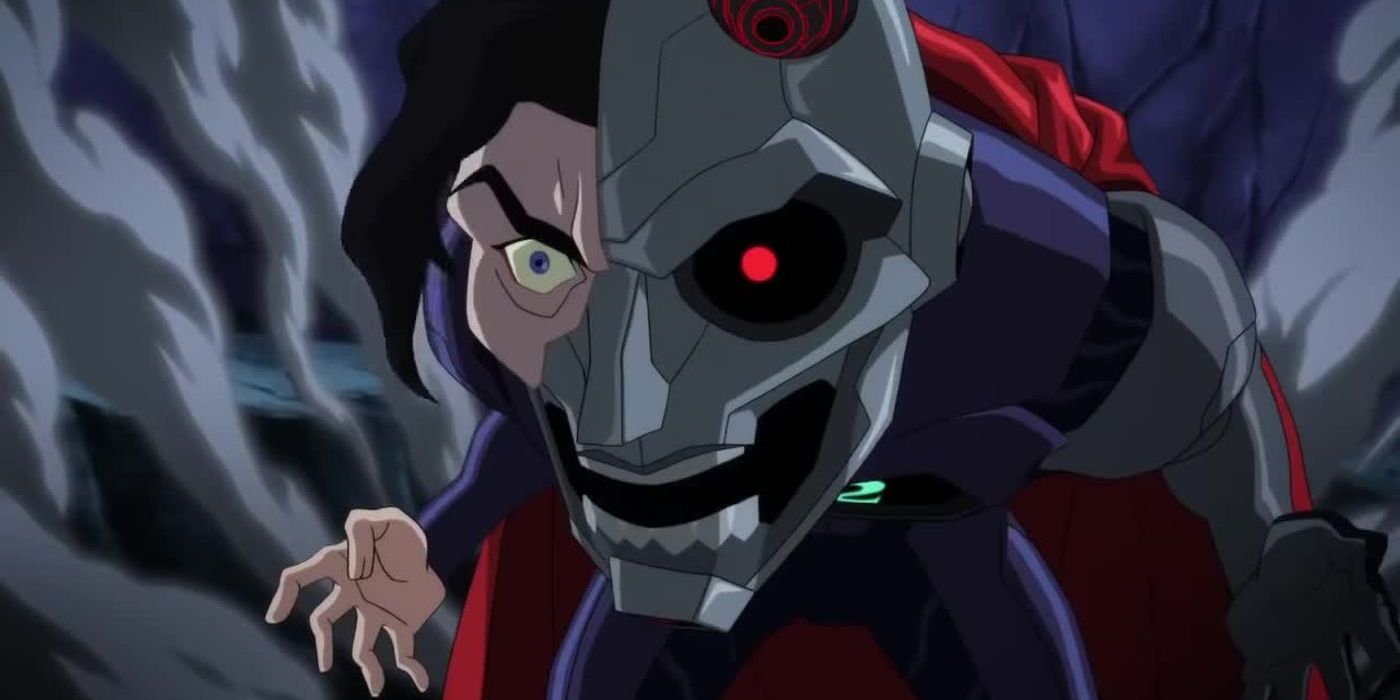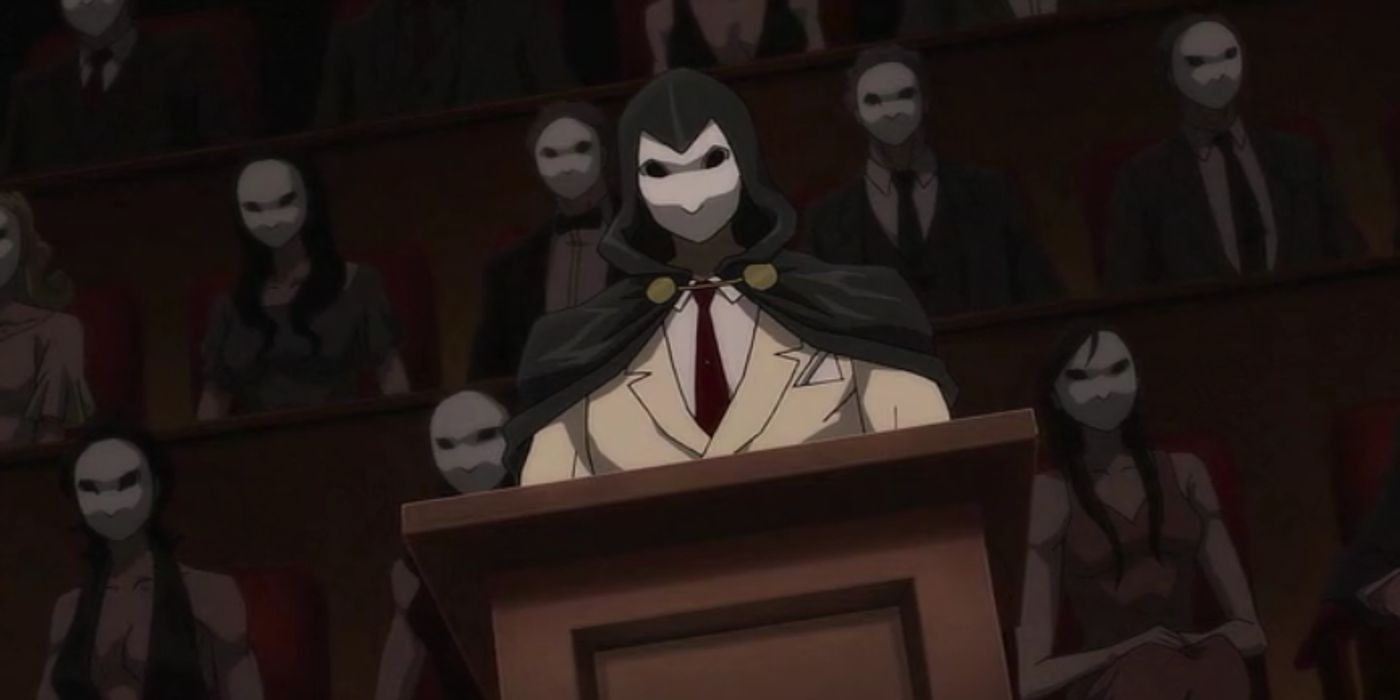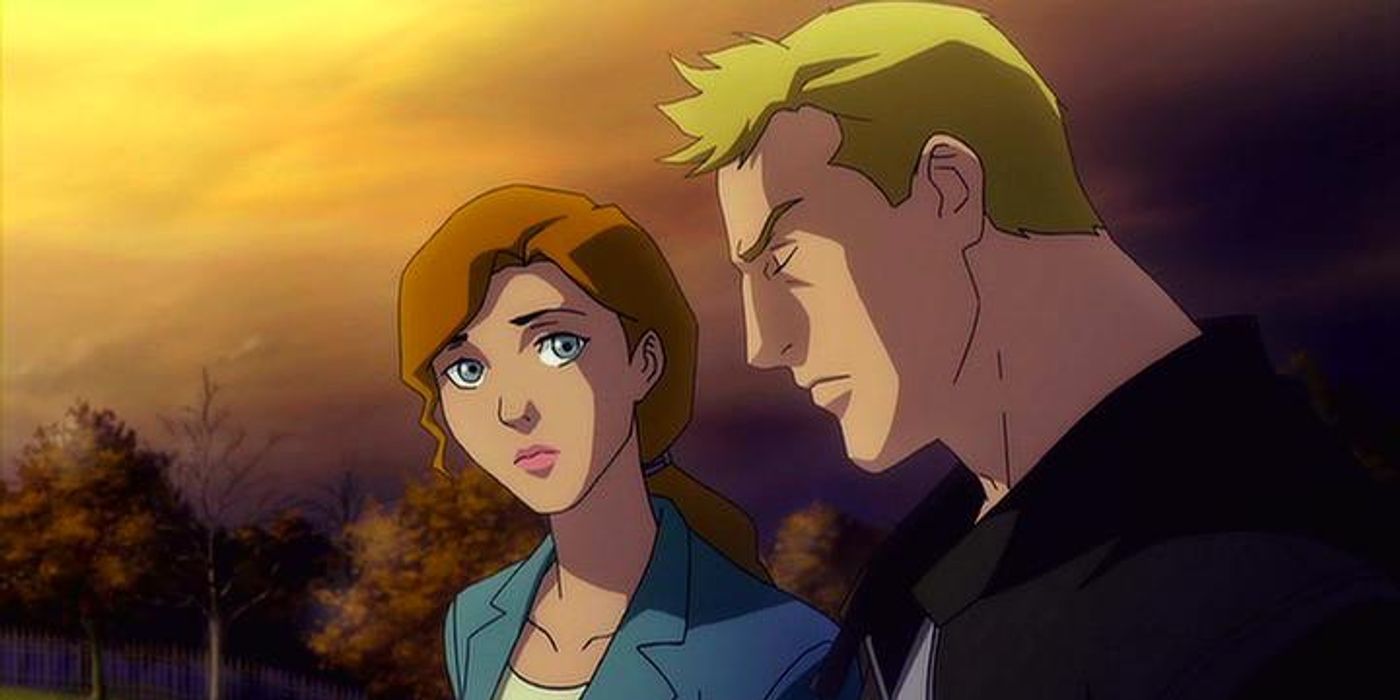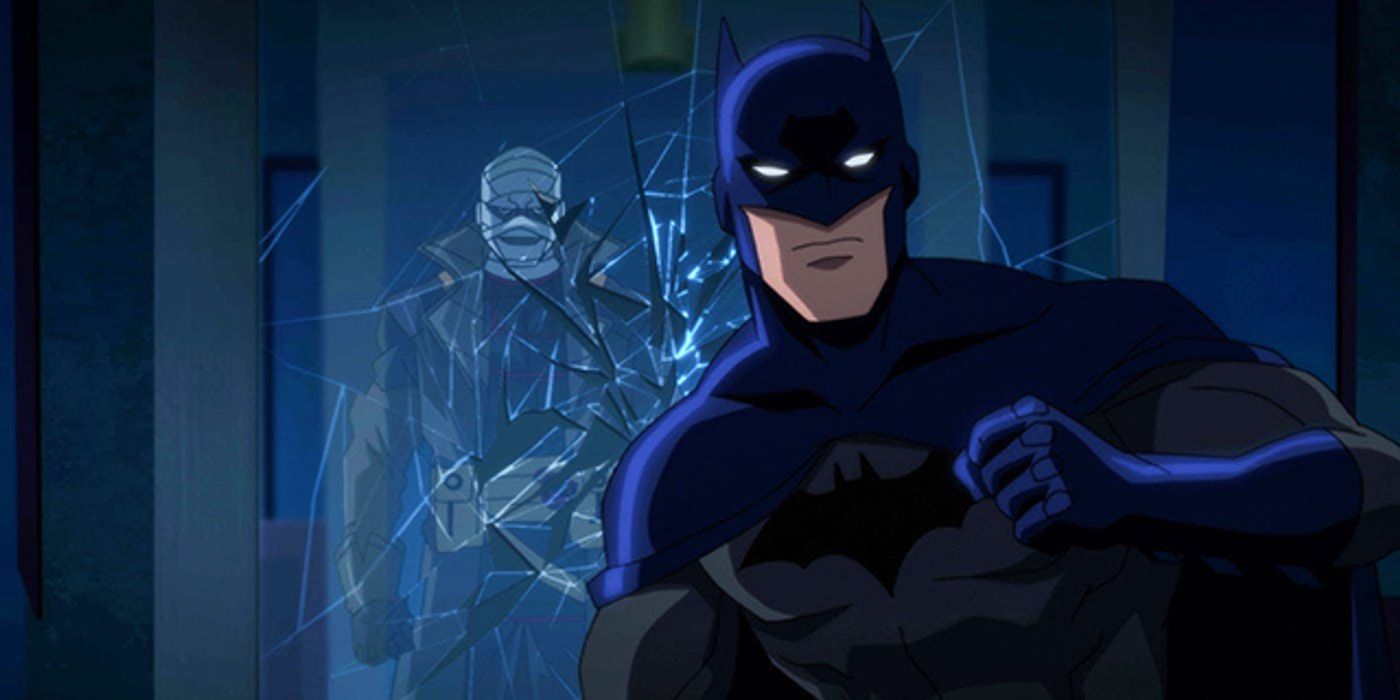And so, after seven long years, the DCAMU has come to an end. While the DCEU failed to establish its cinematic universe successfully, the DCAMU was able to pull it off on a much lower budget and with some of the writers/producers behind the Justice League and Young Justice series. While a few entries have created their own stories, most of the DCAMU films have adapted storylines based on several popular comics.
These adaptations were never 100% accurate, with some changes made for both the better and the worse. Warning: spoilers below.
10 Better Change: Justice League vs. Doomsday fight
In both versions of the Death of Superman, we get to see Doomsday completely wipe the floor with the Justice League until Superman comes along. However, if we had to go with which line-up had the better fight, we'd go with the movie version. Admittedly, it has to do with the line-up featuring more recognized heroes going up against Doomsday.
Seeing the much more familiar Justice League take a beating from Doomsday makes the villain much more intimidating. Sure, the book has a few recognized and powerful faces in Booster Gold and Blue Beatle, but does anyone know/remember heroes like Maxima and Bloodwynd?
9 Worse Change: All of Throne of Atlantis
Throne of Atlantis was an epic tale of betrayal. In it, we see Atlantian advisor Vulko staged war between the surface and the city of Atlantis in an attempt to get Aquaman to become the King of Atlantis once again. While the set-up was kept somewhat intact, most of this was changed for the movie.
Instead, the film was more of an origin story for Aquaman, and the person pulling the strings was Orm in an attempt to get revenge on the surface world, who he believed was at fault for the death of Atlantians in the aftermath of Darkseid's failed invasion. It sounds better, but it ultimately lacked the compelling storytelling and dialog that made the source material so great.
8 Better Change: Doomsday's attack on Metropolis
While Doomsday took on the League in the movie, the battle eventually leads to Metropolis. In the comic, Superman momentarily defeats Doomsday.
When Doomsday gets back up, he goes to Metropolis because he sees a wrestling match and gets the idea to go there to fight powerful opponents.
7 Worse Change: Nightwing
Of all the heroes who got the short end of the deal in the DCAMU, it's Nightwing. While it was great to see him in Son of Batman, fans of Batman's former sidekick weren't too pleased with how he was turned into the series's Whipping Boy.
Time and time again, Nightwing would get his butt kicked just so the writers could show off how powerful the villain of the film was. The only time he got some love shown towards him was when he briefly took over as Batman in Bad Blood.
6 Better Change: Damian's Arrogance toned down
It took fans a while to warm up to Damian Wayne in the comics. When he first appeared, he was just a brash, arrogant brat that went to extremes to please his father. He cried that he couldn't do anything he wanted and nearly killed Robin (Tim Drake) so that he could become the new Boy Wonder.
In the DCAMU, Robin was far less of a burden than he was in the comics. Sure, he had an ego, but he slowly evolved into a much less arrogant character than in the comics.
5 Worse Change: Shazam as a Founding Member
The biggest change Justice League: War made was in making Shazam a founding member of the Justice League. While it's unknown why Shazam was chosen, many think it's because of the negative stigma Aquaman use to have. For years, people just thought of him as "The guy from Super Friends who talks to fish," until Jason Momoa portrayed the character in Justice League and 2018's Aquaman.
Shazam has been part of the Justice League, but a founding member is a little farfetched for our liking. Maybe it's the fact that he's still a kid in the body of an adult, but Shazam is a little too juvenile to be founding member material.
4 Better Change: Cyborg Superman's Origin
Cyborg Superman had one of the more convoluted origins for a Super Villain. In a dark twist on the Fantastic Four's origin, Hank Henshaw and his crewmates gain superpowers and slowly begin to die. After saving his wife, Terry, Hank's body disintegrated. Before his death, he transferred his mind into a Lex Corp computer, where he downloaded his mind into a robot body. Terry later committed suicide after seeing Hank in his new body. Much of this was eliminated to make things much more straightforward.
After putting too much faith in the hopes that Superman would rescue him and his family, The Meteorite holding Doomsday crashed into their spaceship. Darkseid then takes the remains of Hank and transfers him into the body of Cyborg Superman. It's a much better and straight forward version of Hank's origin.
3 Worse Change: Court of Owls
The Court of Owls are some of Batman's more recent foes. Similar to the Demons Head, they've been around for centuries trying to rule Gotham City. Unlike the Demons Head, The Court has no face like Ra's Al Ghul, and their numbers are near endless. That wasn't the case for their animated adaptation. While this seemed to be the case early on, the Court's leader was revealed to be a woman named Samantha Vanaver and planned to kill the recently emancipated Damian.
Unfortunately, their greatest warrior(Talon), refused and eliminates the Court before using the Talon forces to launch an assault on Wayne Manor. While it's not the most egregious change, it does take away from the Court's intimidation and makes them come off as another evil group.
2 Better Change: Flashpoint Opening
The Flashpoint Paradox smartly cut a lot of fat from the source material. From cutting back the exposition and a few unnecessary characters, it can be argued that the movie was much better than the Flashpoint comic. The most significant change was in its introduction. Unless one was keeping up with the Flash comic series, new readers were thrust into the story without any much context. Barry just wakes up into the world of Flashpoint, and the rest is explained as the story goes on.
Luckily, Flashpoint Paradox does a much better job of giving context into how and why Barry goes back in time to save his mom in the first place. We get a flashback into Barry's childhood and a touching moment of Barry and Iris visiting his mother's grave, lamenting his inability to save her.
1 Worse Change: Hush's Identity
Thomas Elliot has a grudge against Bruce Wayne. When his parents were caught in an accident, only his mother survived. It was later revealed that Thomas was the culprit behind the incident since he wanted to become an orphan to inherit his family's fortune. But, since his mother survived, that wasn't the case.
While the Hush animated movie adapted most of the comic, Hush's backstory was thrown out for the sake of a twist. Now, Hush is just the Riddler who wants to get back at Batman, and Thomas Elliot was killed half-way into the film. To say fans were upset off would be an understatement.

